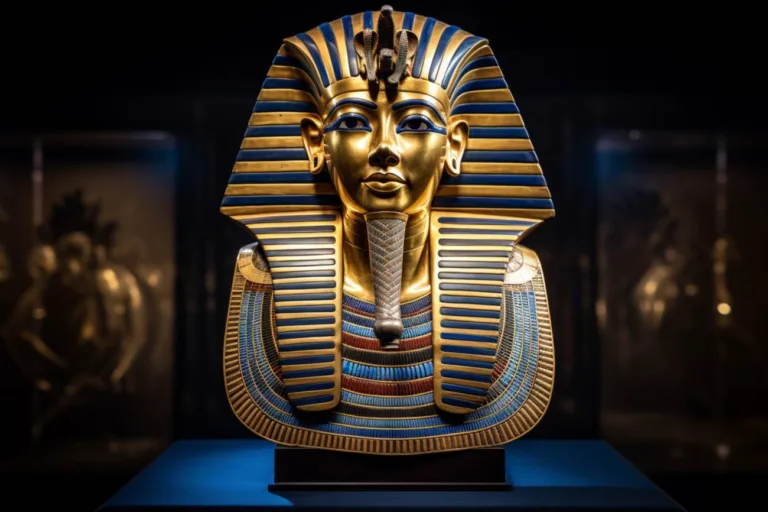Welcome to the captivating world of one of ancient Egypt’s most iconic figures – King Tutankhamun, often referred to as King Tut. As we delve into the life, legacy, and mysteries surrounding this young pharaoh, we are transported back in time to a civilization that continues to awe and inspire the modern world.
The life and reign of king tut
King Tutankhamun, born around 1341 B.C.E, ascended the throne at a remarkably young age of nine or ten, following the reign of Akhenaten, his heretic father. During his brief rule, which lasted from approximately 1332 to 1323 B.C.E, King Tut worked to restore the traditional religious practices that had been disrupted by his father’s radical reforms.
Despite his young age, King Tut made significant decisions, including relocating the capital back to Thebes and reinstating the worship of Amun, the chief deity of the time. His reign was relatively short but left an indelible mark on ancient Egyptian history.
The discovery of the tomb
The name King Tut became synonymous with the grand discovery of his nearly intact tomb in the Valley of the Kings by British archaeologist Howard Carter in 1922. This unparalleled find offered a rare glimpse into the opulence and cultural richness of the New Kingdom of Egypt.
The tomb contained a breathtaking collection of treasures, including his iconic funerary mask crafted from pure gold, ornate jewelry, chariots, and other artifacts. The discovery fueled global fascination with ancient Egypt, spawning a wave of Egyptomania that continues to this day.
The curse of the pharaoh
One of the enduring myths surrounding King Tut is the so-called „Curse of the Pharaoh.“ This notion gained traction due to the mysterious deaths of some individuals associated with the tomb’s opening. While modern scholarship largely dismisses the idea of a supernatural curse, the legend has contributed to the allure and mystique surrounding King Tut’s legacy.
Theories about his death
The exact cause of King Tut’s death has long puzzled historians and Egyptologists. Recent scientific analyses, including CT scans and DNA testing, suggest that he likely died from a combination of genetic predisposition and complications from a leg fracture. These findings provide a more nuanced understanding of the health challenges he faced during his lifetime.
The legacy of king tut
King Tut’s legacy extends far beyond the glittering treasures found in his tomb. His reign marked a return to traditional religious practices and a reestablishment of stability in Egypt. His story has captured the imagination of countless generations, inspiring literature, art, and popular culture.
Furthermore, the artifacts discovered in his tomb continue to provide valuable insights into the daily life, craftsmanship, and beliefs of ancient Egyptians. They stand as a testament to the enduring legacy of a young pharaoh who ruled during a pivotal era of Egypt’s history.
1. How old was King Tut when he became pharaoh?
King Tutankhamun became pharaoh at the age of nine or ten.
2. What was the significance of King Tut’s tomb?
King Tut’s tomb, discovered in 1922, was a remarkable find due to its nearly intact state and the exquisite treasures it contained.
3. Is there really a curse associated with King Tut’s tomb?
The idea of a curse linked to King Tut’s tomb has been largely debunked by modern scholarship, but it remains a popular legend.
4. What caused King Tut’s death?
Recent scientific analysis suggests that King Tut likely died from a combination of genetic factors and complications from a leg fracture.
5. What is King Tut’s lasting legacy?
King Tut’s legacy encompasses his restoration of traditional practices, the captivating artifacts found in his tomb, and his enduring influence on art and culture.
Pozri tiež:






